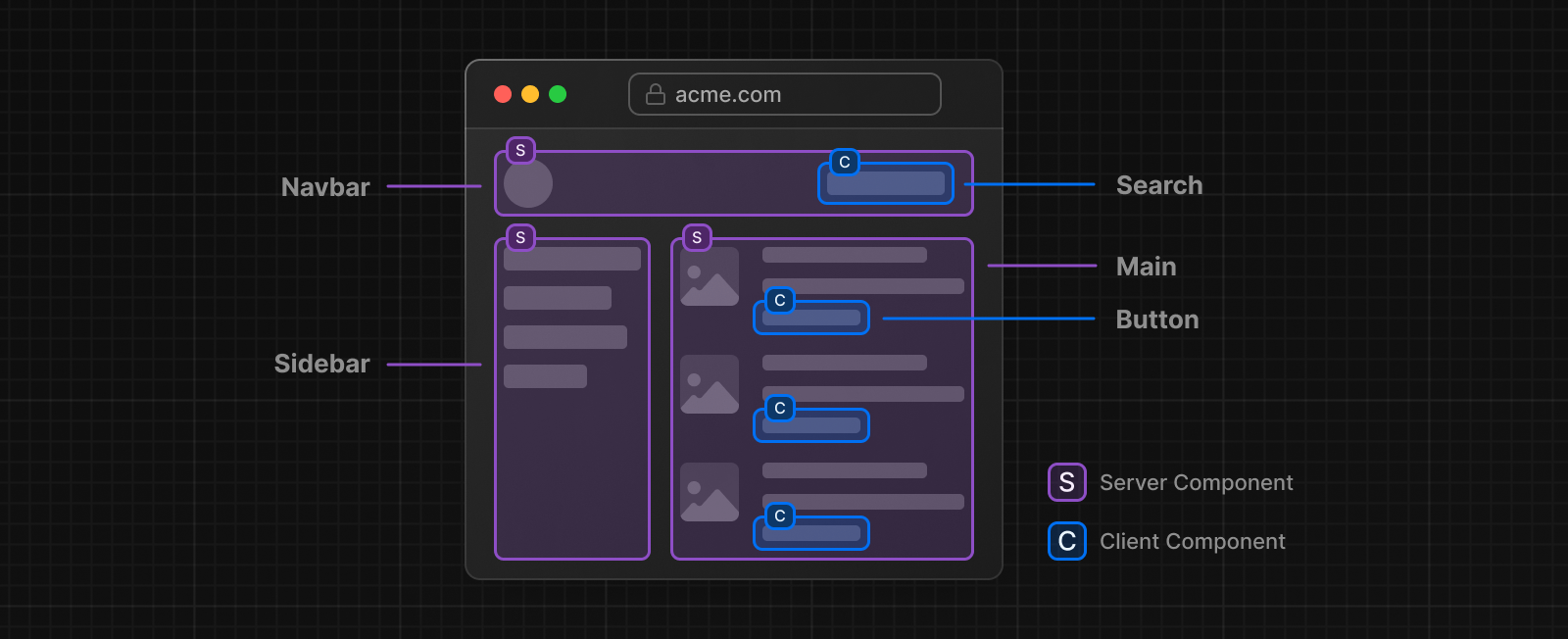Table of contents
In the ever-evolving landscape of web development, React.js has revolutionized the way we build user interfaces. And now, with the introduction of React Server Components in Next.js, we have a new model for creating hybrid applications that use the power of both server and client rendering.
In this blog post, we'll dive into the world of server components and explore how they enable developers to build applications that combine the interactivity of client-side apps with the performance benefits of server rendering. We'll discuss the thinking behind server components, their advantages over client components, and how they enhance the development experience in Next.js.
Let's get started by understanding the concept of server components and their role in application architecture.
Think in Server Components
When building a page for your app, you'll notice that most of the components on the page don't require user interaction and can be rendered on the server as Server Components. Why burden the client with rendering the entire page when only a few components need interactivity?

With Server Components, you can optimize your app's performance by separating rendering responsibilities between the server and the client. Non-interactive components are pre-rendered on the server, resulting in a faster initial page load and a more efficient client-side JavaScript bundle. By leveraging the server's power, Server Components strike a balance between performance and interactivity, following Next.js' server-first approach.
Advantages of Server Components
At this point, you may be wondering about the advantages of server components.
Server Components offer several advantages that allow developers to better leverage server infrastructure, enhance performance, and provide a more efficient development experience. Here is a list of things about it 👇
Server Components leverage server infrastructure
They allow developers to offload the rendering of non-interactive components to the server. This means large dependencies that could impact the JavaScript bundle size on the client can remain on the server, leading to improved performance.
Simplicity and familiarity of development
Server Components make writing a React application feel similar to PHP or Ruby on Rails. Developers now can take advantage of the power and flexibility of React and its component model for templating UI while enjoying a development experience that is reminiscent of traditional server-side frameworks.
Faster page load
With Server Components, the initial page load is faster since non-interactive components are pre-rendered on the server. This approach reduces the amount of JavaScript sent to the client, resulting in a smaller client-side JavaScript bundle and improved performance.
Efficient client-side interactivity
Server Components allow for selective client-side interactivity through Client Components. The base client-side runtime remains cacheable and predictable in size, and additional JavaScript is only added when client-side interactivity is used in the application. This ensures efficient resource utilization and prevents unnecessary bloating of the client-side code.
Seamless user experience
When a route is loaded with Next.js, the initial HTML is rendered on the server. As the page progressively enhances in the browser, the client takes over the application and adds interactivity by asynchronously loading the Next.js and React client-side runtime. This approach provides a seamless transition from server rendering to client-side interactivity, enhancing the overall user experience.
Conclusion
In conclusion, Server Components in Next.js offer developers the power to optimize performance, leverage server infrastructure, and provide a seamless user experience. By rendering non-interactive components on the server, you can reduce bundle sizes, achieve faster page loads, and streamline development. Embrace the potential of Server Components to unlock enhanced performance and take your Next.js applications to new heights. Happy coding!
